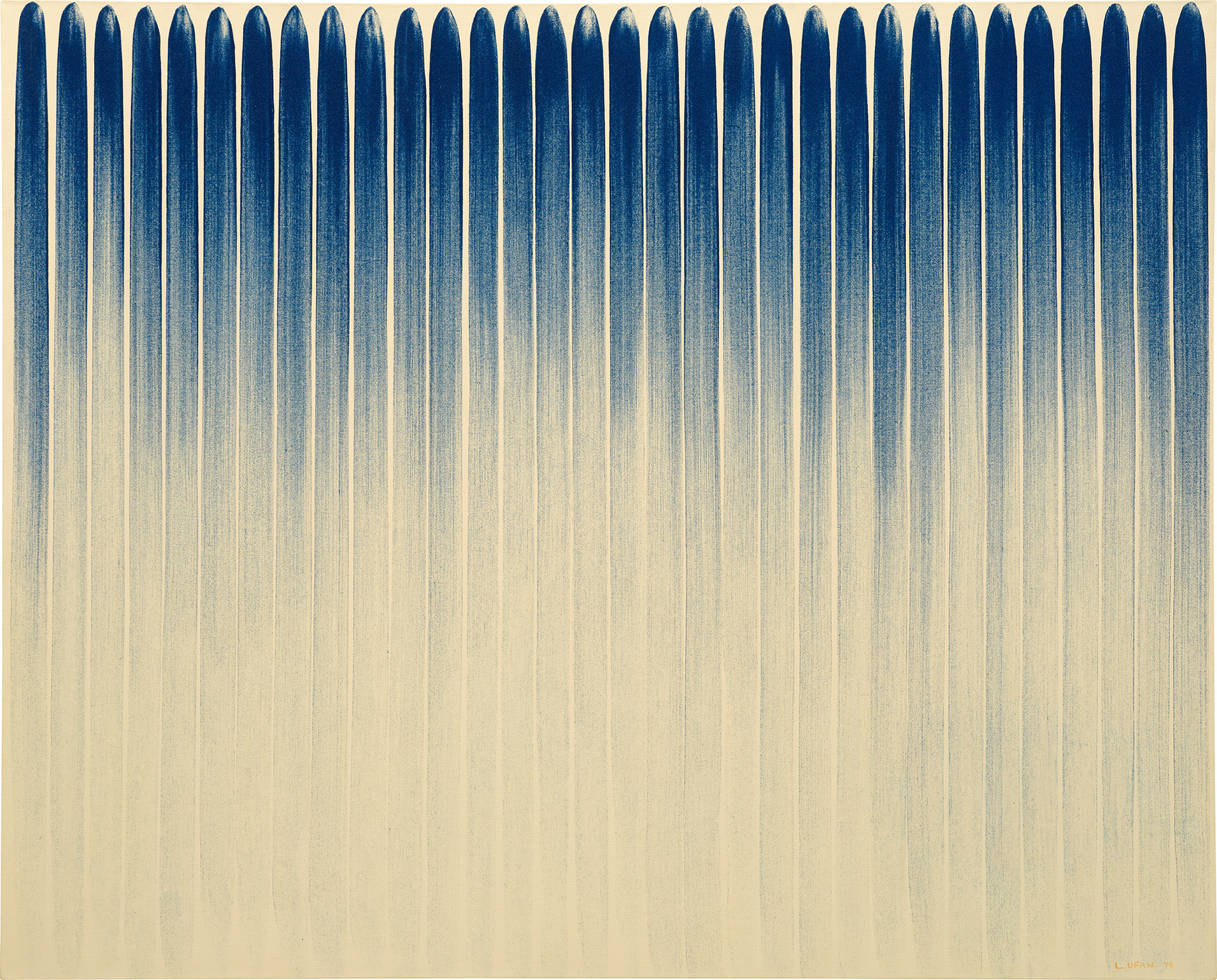
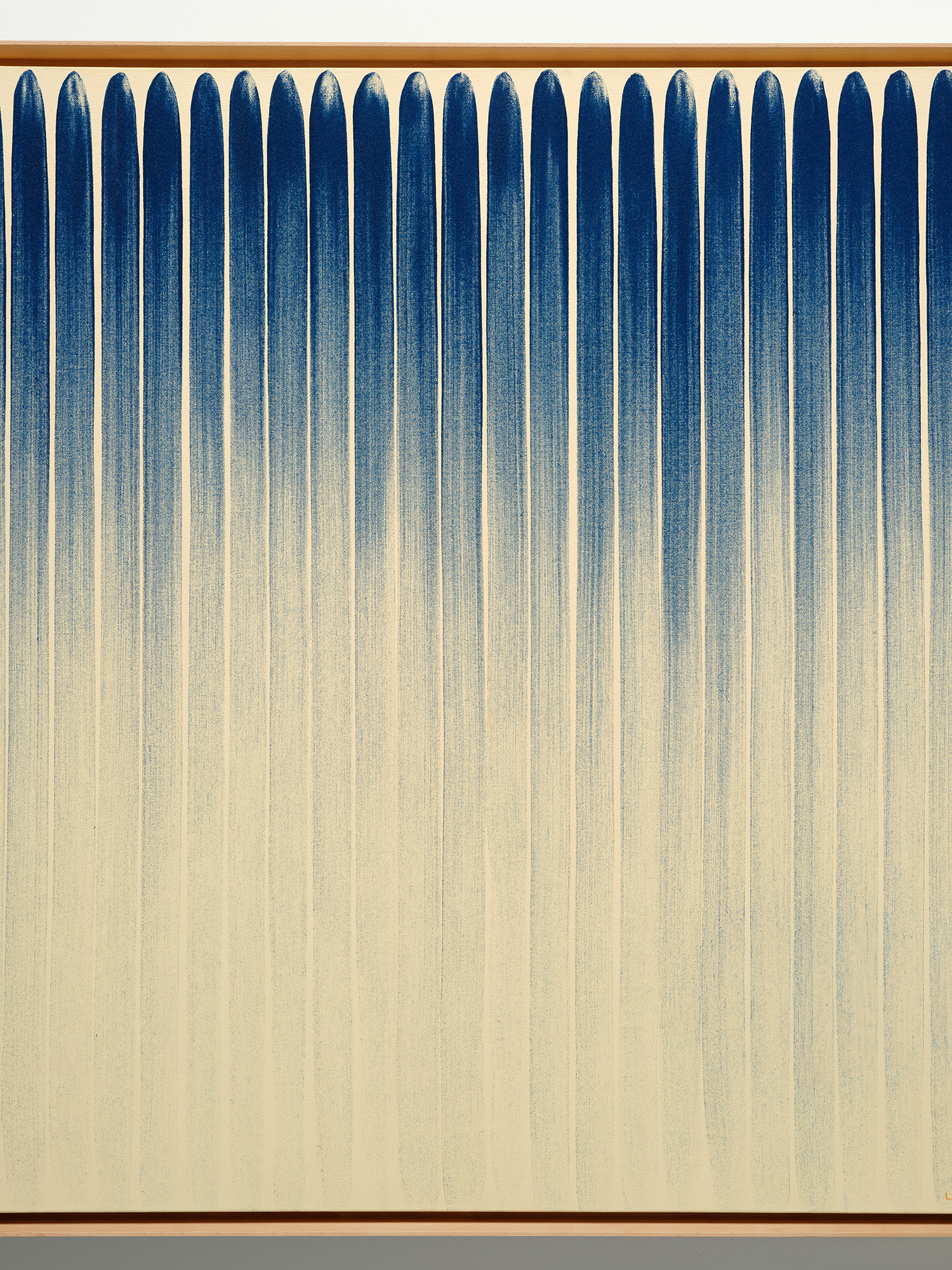
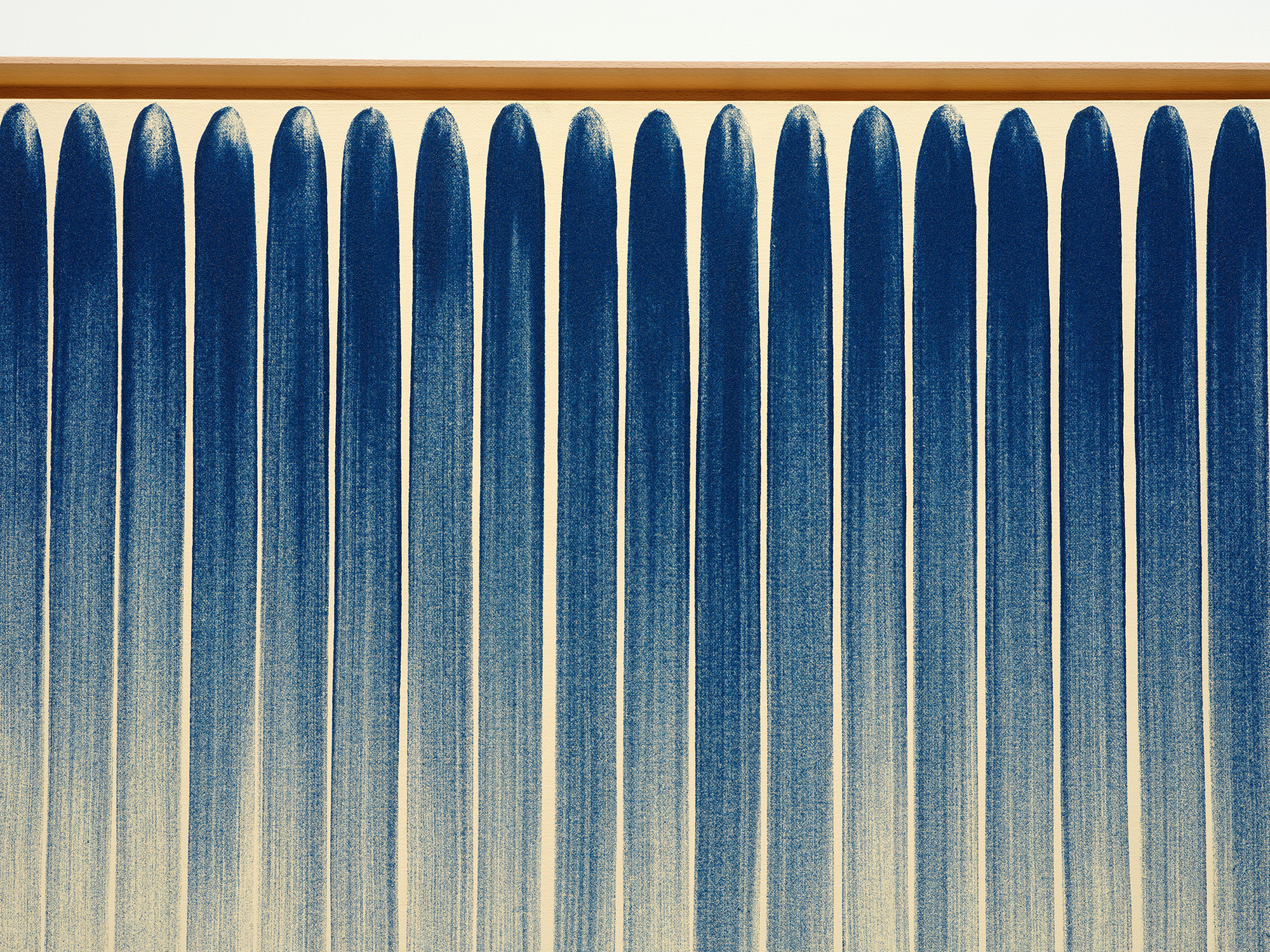
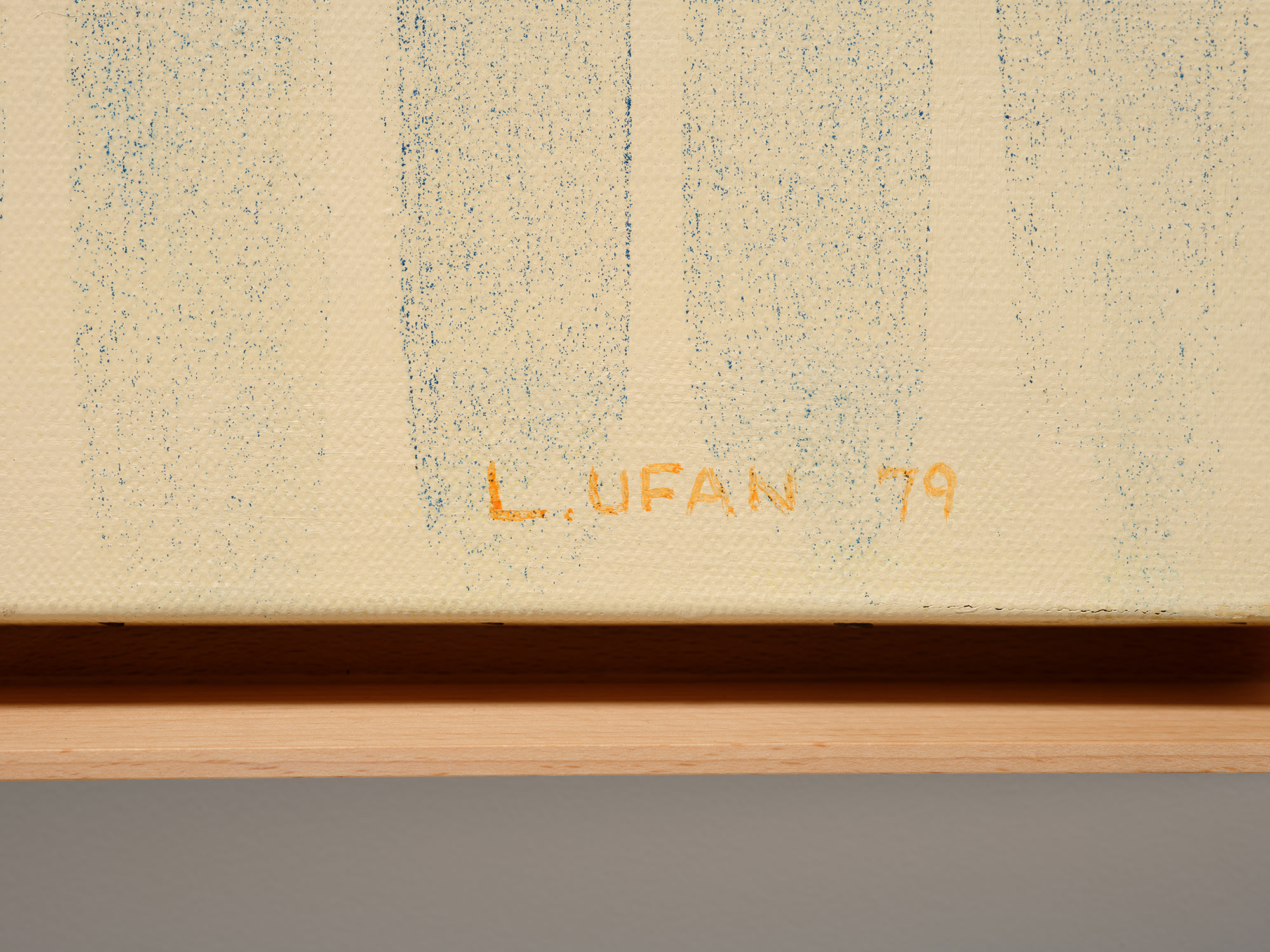
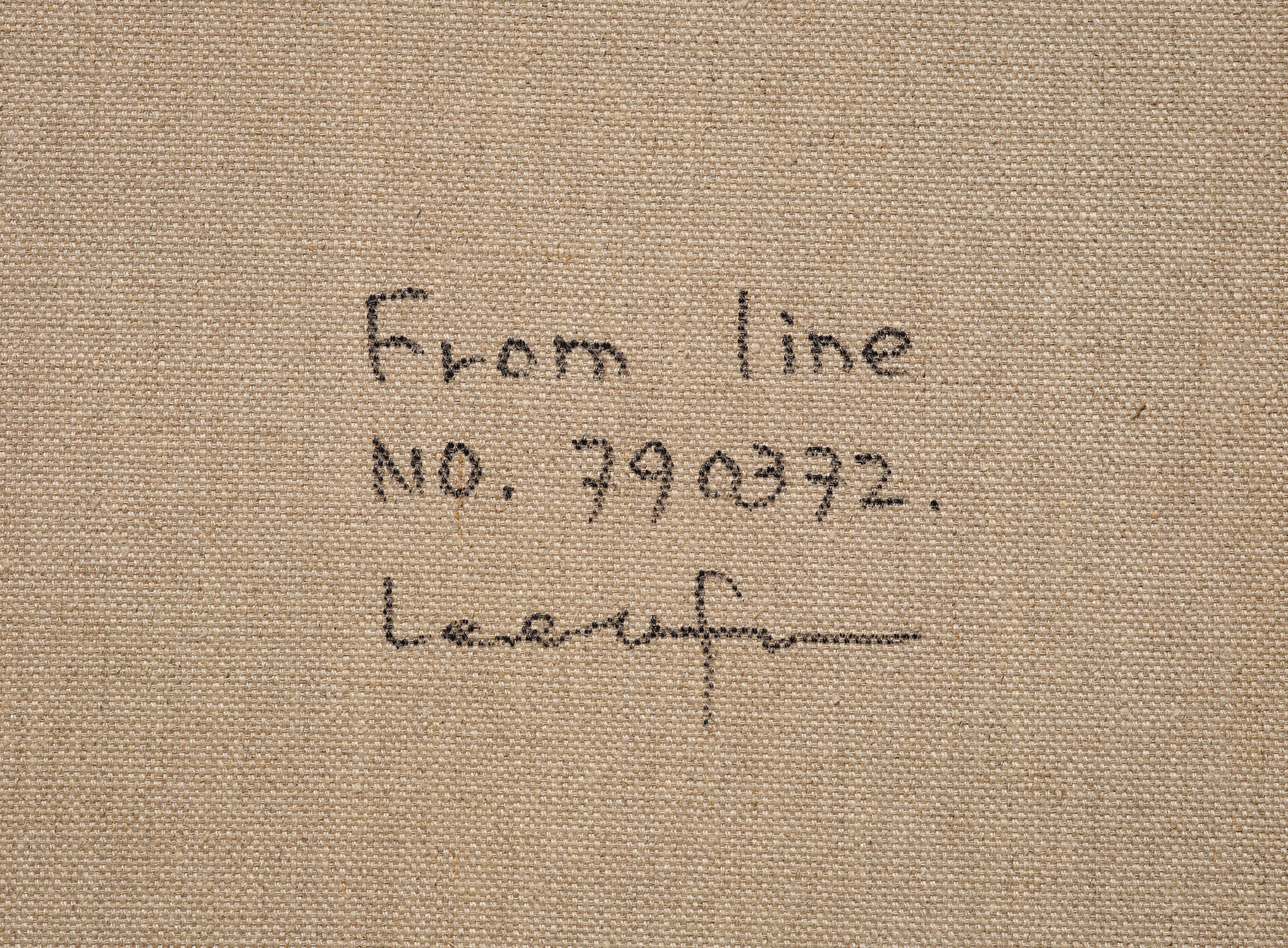
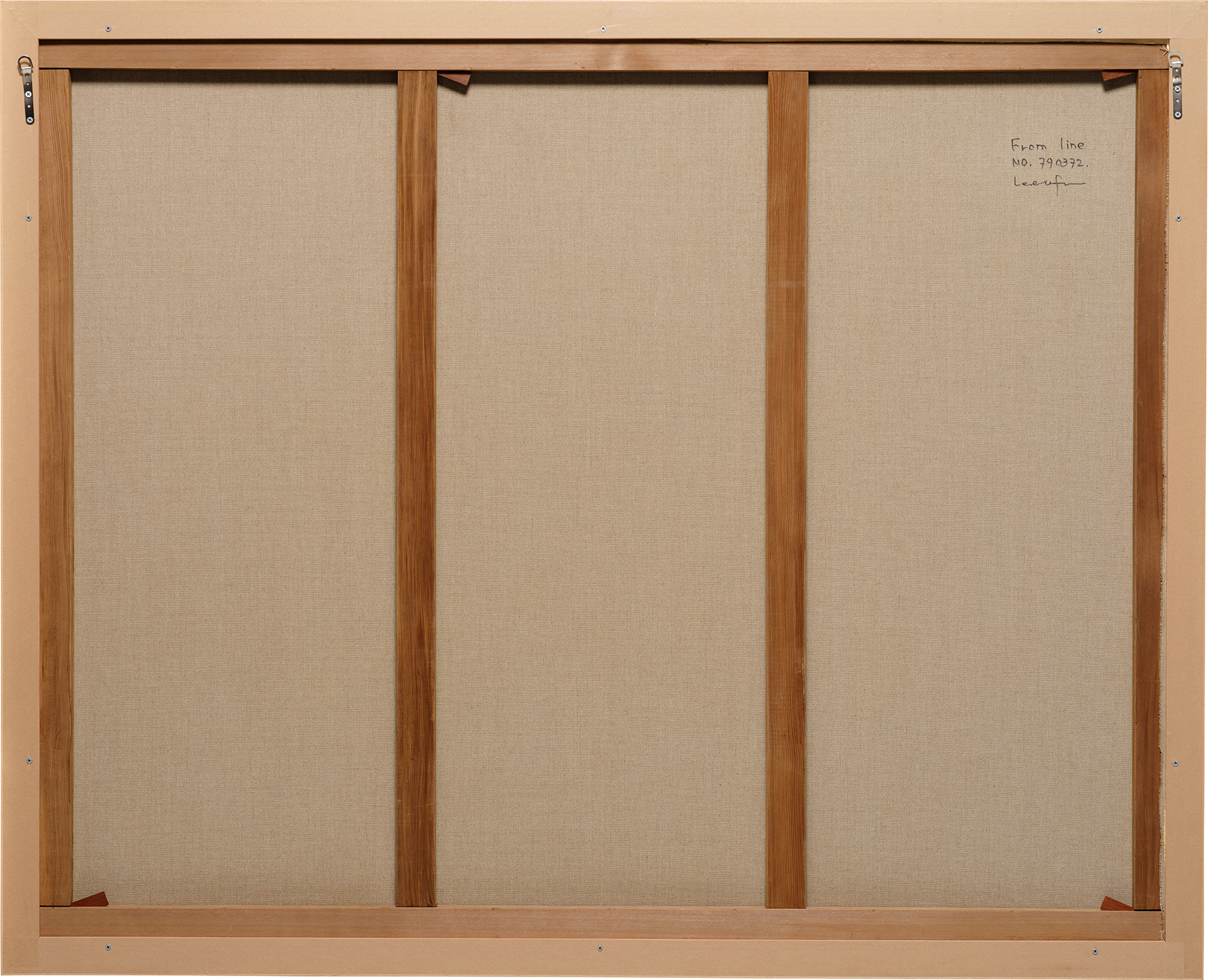






28✱
Lee Ufan
From Line No. 790372
signed and dated 'L.UFAN 79' lower right; further signed and titled '"From line NO. 790372." Lee Ufan' on the reverse
oil and mineral pigment on canvas
135.2 x 166.8 cm. (53 1/4 x 65 5/8 in.)
Executed in 1979.